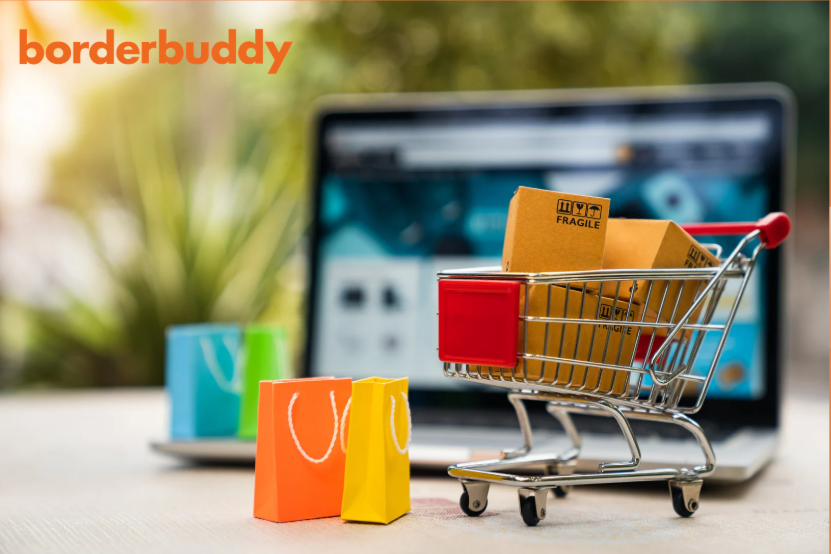Simplify your customs today
Calculate duties and taxes

.avif)
.avif)
import into canada
Import into the USA
.png)
© 2025 Borderbuddy, All rights reserved.
Designed by SupaStellar

The holiday season is officially here, and for many, that means the thrill of finding the perfect gift and the convenience of online shopping. While e-commerce simplifies gift-giving, the surge in online activity and international imports creates a prime opportunity for criminals to exploit shoppers who are unaware of what to look for.
When your holiday shopping takes you beyond your home country’s borders, a few additional precautions can save you from frustrating surprises at delivery. Many shoppers assume that the checkout price is the final price, but cross-border e-commerce works differently - and not every seller is transparent.
One of the biggest issues is misleading or incomplete pricing. Just because the checkout shows “Dollars” doesn’t mean it’s in your domestic currency. A price shown in USD on a Canadian-targeted website is a common source of unexpected costs. Before completing your purchase, confirm the currency and make sure the retailer is providing a fully landed cost — that means the product price, shipping, duty, tax, customs brokerage fees, and currency conversion charges are all included upfront in the quoted total.
If the retailer doesn’t calculate duties and taxes at checkout, you could be hit with a doorstep bill from the courier — often COD — for brokerage, tax, and duty charges before they release the package. This can turn a “great deal” into a far more expensive purchase than expected. Every country has different duty rates depending on the product type, so it’s important to know what duty rate applies if it isn’t shown in the checkout flow.
Cross-border shopping should be convenient, not confusing. Look for clear indicators that the seller is calculating all required import charges upfront in your local currency. If they aren’t, use a duty and tax estimator or contact a customs broker in advance so you fully understand what you’re agreeing to.
As North American trade compliance experts, BorderBuddy wants to ensure your purchases are safe, legitimate, and won't cause headaches (or harm) down the road. Counterfeit goods are more than just cheap knockoffs; they may contain toxic materials, pose serious health and safety risks (especially electronics and toys), and ultimately fund transnational criminal activities.
The core strategies for vigilance are universal. The advice shared by U.S. Customs and Border Protection (CBP) and the Canada Border Services Agency (CBSA) is essential for consumers on both sides of the border. Here are the key points to keep in mind before you click "Buy Now":
The most foundational advice is simple: Trust your instincts. If a popular, high-value product is selling for an unrealistically low price - especially from a seller you've never heard of, it's highly likely to be a fake. Authentic goods have a value, and deep discounts that ignore market norms are a major red flag.
Before purchasing, do your research:
Your payment security is paramount. Always check the checkout page URL. The address should begin with https:// - the "s" stands for secure. Never use unsecure payment methods or share sensitive financial data outside of a verified, encrypted payment portal.
Your due diligence doesn't end when the package arrives. Inspect the packaging and the product immediately. Counterfeiters often overlook small details:
Both the U.S. Customs and Border Protection (CBP) and the Canada Border Services Agency (CBSA) have measures in place to seize illicit goods. Even if you are an individual buying for personal use, purchasing from a suspicious seller significantly raises the risk that you could receive an unsafe, unregulated, or recalled product that is prohibited from entering the country.
Whether you are shopping for delivery in Vancouver, New York, or anywhere in between, vigilance is your best defense. By following these essential guidelines and checking the standards set by your country’s border and health agencies, you can ensure your holiday is happy and hazard-free.
Need help navigating the complexities of importing goods into North America? BorderBuddy is here to ensure your supply chain is compliant, safe, and secure year-round. Get in touch with our team today!